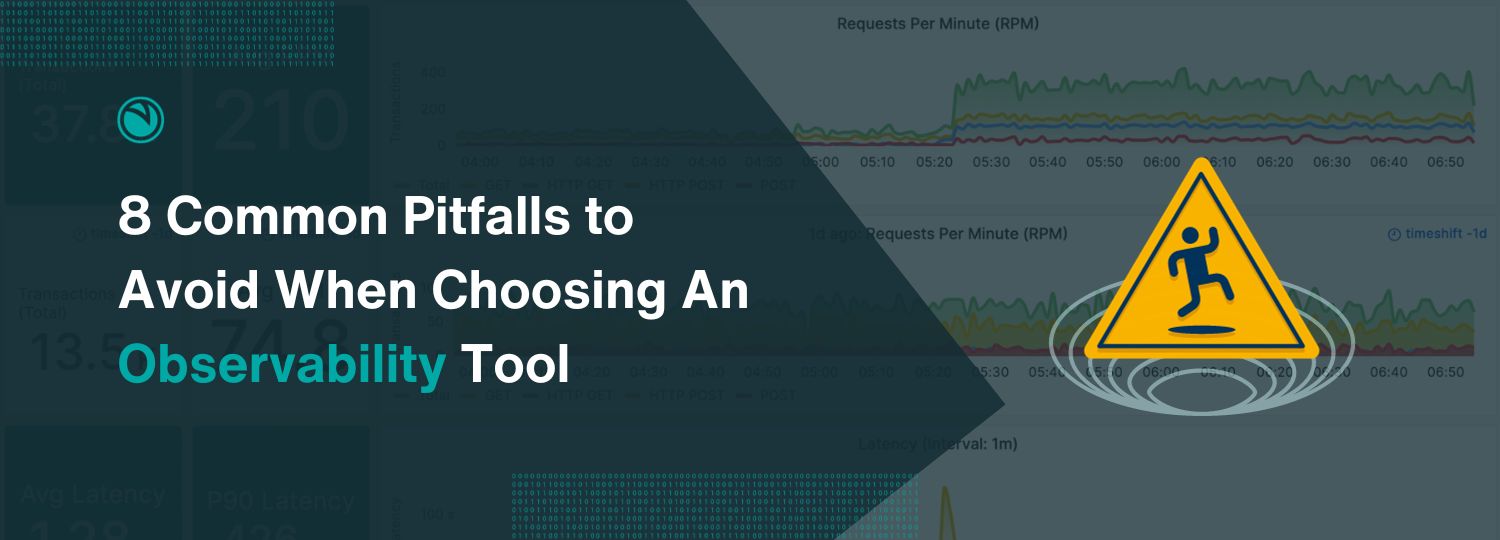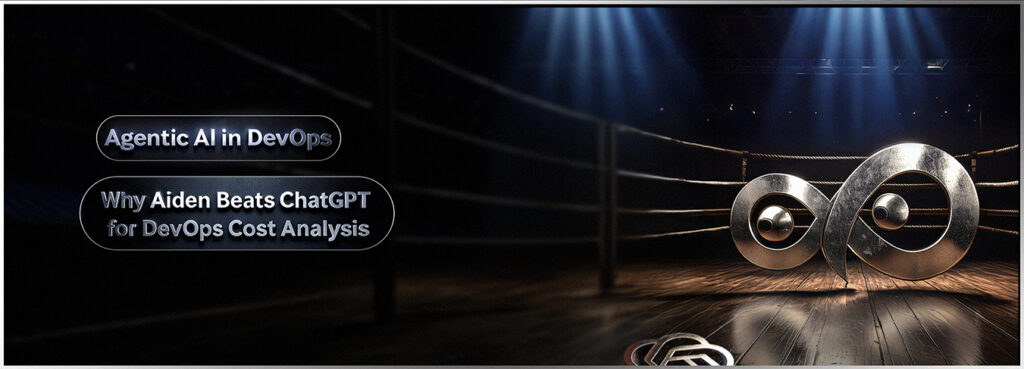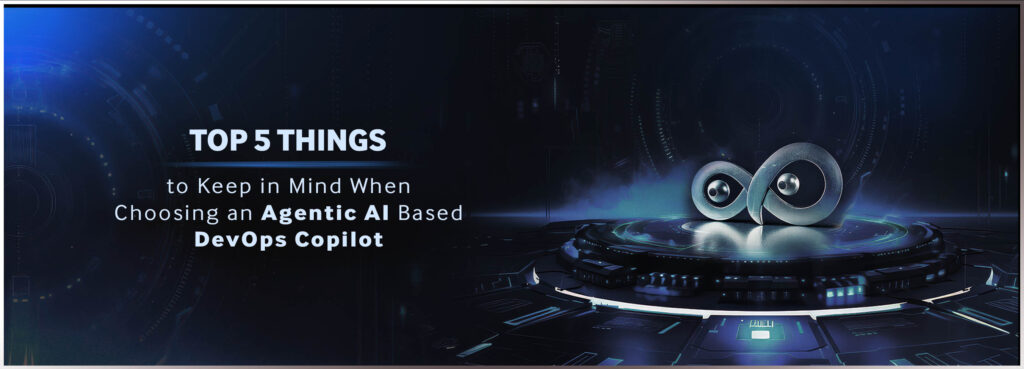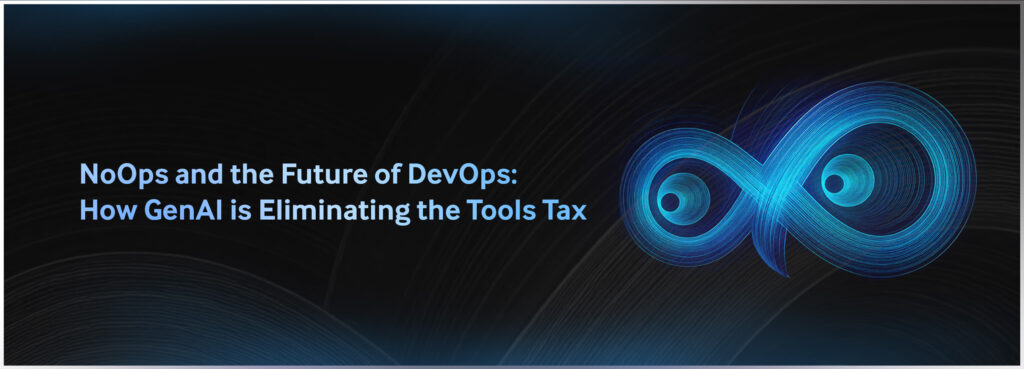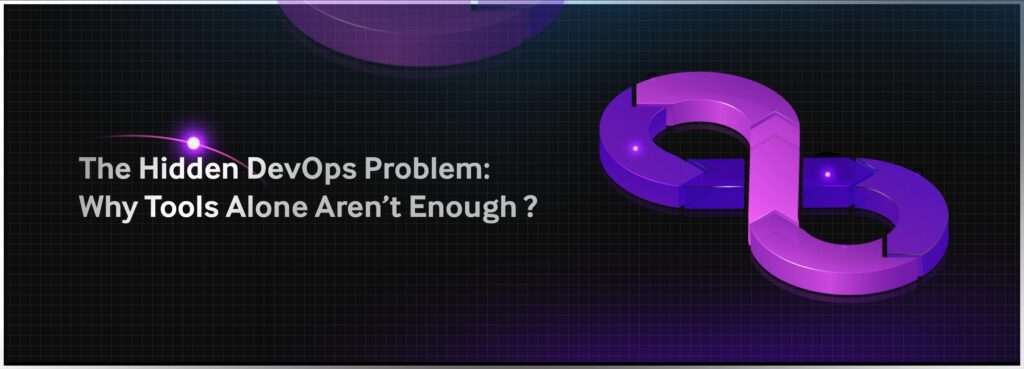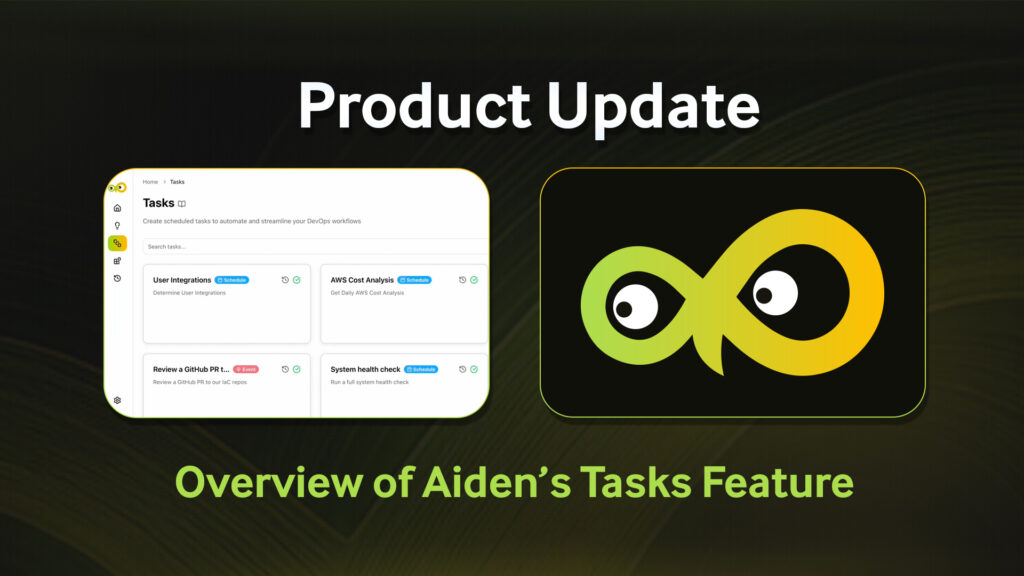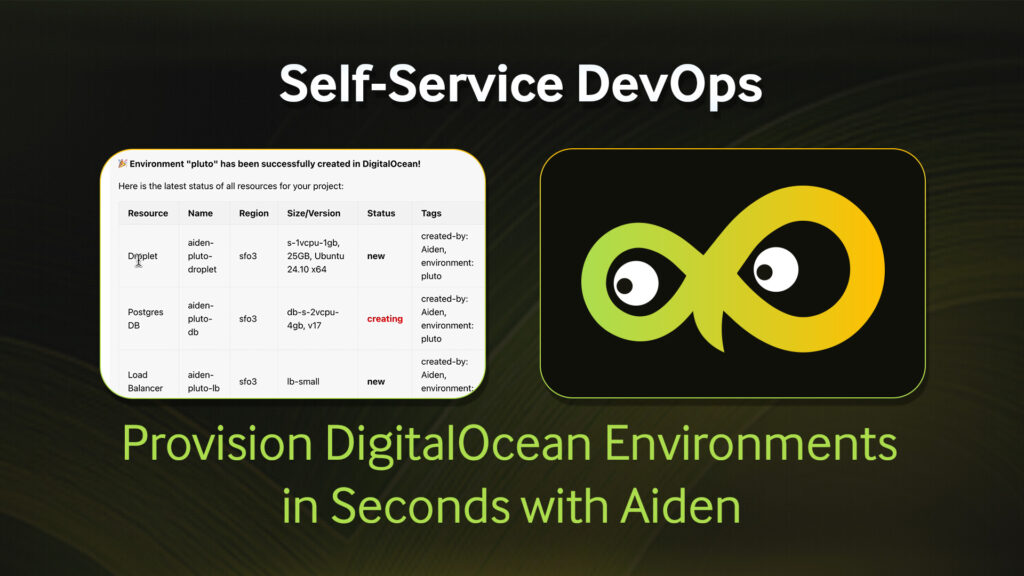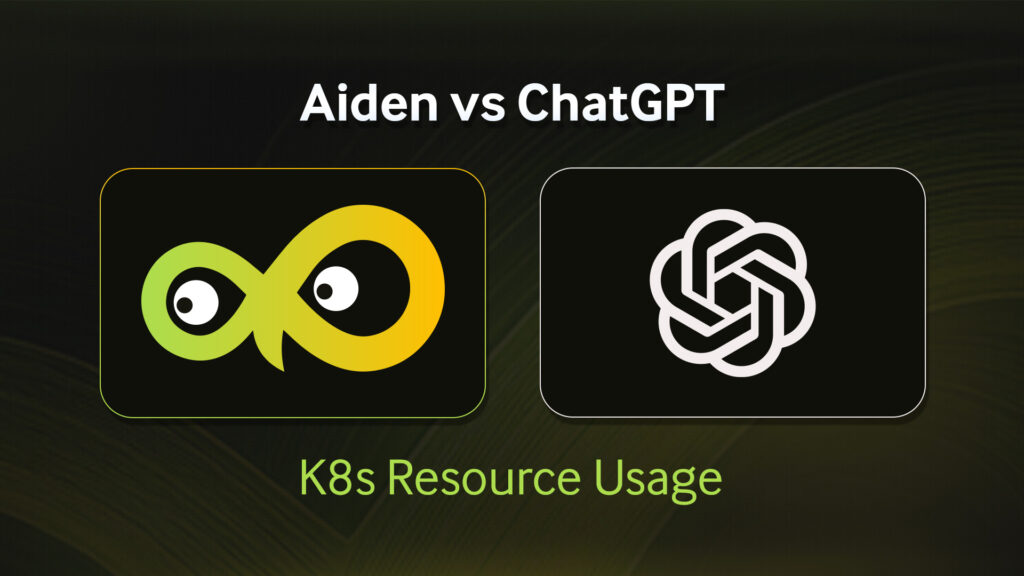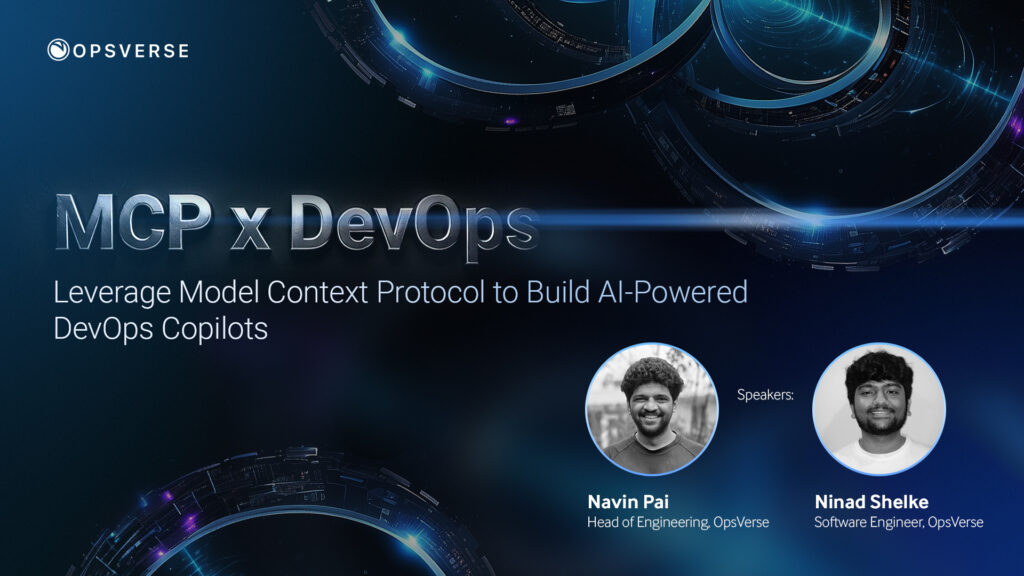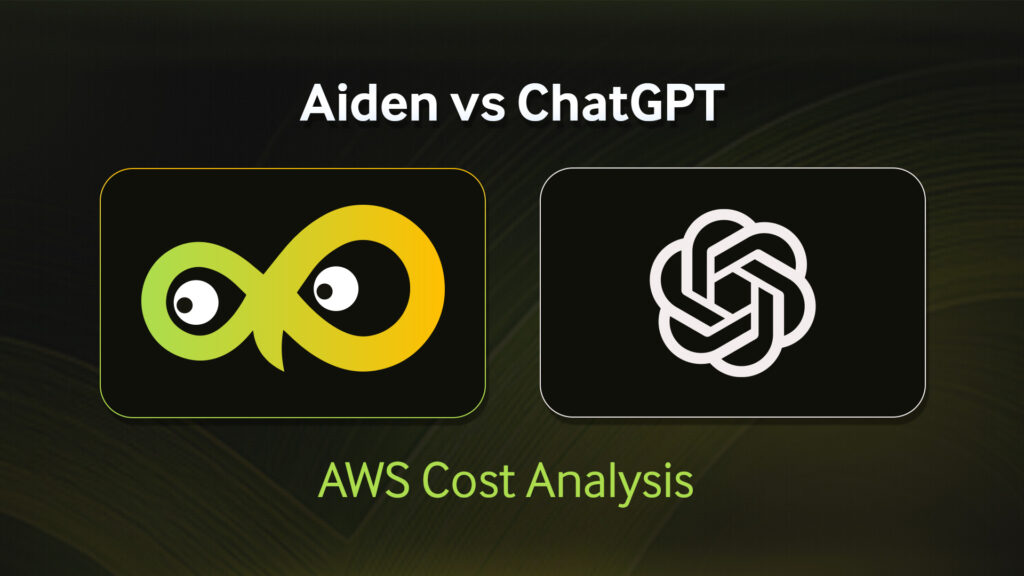In our previous blog, we talked about the various factors an organization must consider when selecting an observability tool for their DevOps needs. Choosing the right Observability tool is a critical decision for any organization seeking to gain deeper insights into the performance and reliability of their systems and applications. However, this process is not without its challenges, and there are common pitfalls that many businesses can fall into if they are not careful.
In this blog, we’ll explore these potential pitfalls and provide guidance on how to avoid them while choosing the right observability tool.
Making short-sighted decisions
Using tools that only address the current observability requirements without assessing scalability, compatibility, or evolving technology trends can lead to costly migrations or replacements down the road.
Additionally, focusing solely on short-term cost savings may result in selecting tools with limited capabilities, hindering the organization’s ability to adapt to changing demands and/or scale effectively.
To avoid these pitfalls, it’s essential to take a holistic and future-oriented approach when choosing Observability tools, considering not only immediate needs but also the tool’s potential to grow and adapt alongside the organization’s evolving IT landscape.
Ignoring high overhead costs associated with instrumentation
One significant pitfall when selecting an observability tool is the high overhead associated with instrumentation. Instrumentation refers to the process of integrating the observability tool with your software application to emit telemetry data. Often, this requires the engineering team to write custom code to send relevant telemetry to the tool. This can be a time-consuming and resource-intensive task as it diverts valuable engineering resources away from core development work. Furthermore, the added complexity can introduce potential bugs and maintenance challenges.
That’s why it is essential to consider Observability tools or frameworks that offer a standardized, streamlined approach to instrumentation.
Tools that provide libraries and frameworks while making it significantly easier to collect telemetry data without the need for extensive custom coding can help reduce the high overhead traditionally associated with integration. This not only accelerates the implementation of observability, but also minimizes the burden on engineering teams, allowing them to focus on building and improving the application itself.
As a specific example, using OpenTelemetry SDKs to instrument your code will ensure that your instrumentation can make use of a wide range of Observability systems. Similarly, for instrumenting metrics, the OpenMetrics format is a good choice.
Focusing on log monitoring
Relying exclusively on an observability tool for log monitoring can be a major mistake during the selection process. While logs are essential for tracking events and diagnosing issues, they represent only one aspect of a comprehensive observability strategy. Focusing solely on logs neglects the broader picture of system performance, including metrics and traces, which can offer valuable context and insights.
A well-rounded observability platform should encompass multiple data sources, providing a holistic view of an environment’s health.
Using multiple tools
Using multiple tools for each pillar of observability—metrics, events, logs, and traces—can often become a burden when selecting observability tools. According to a report by ESG, two-thirds of organizations today use more than 10 different observability tools for their needs.
While it might seem logical to employ specialized tools for each aspect, this approach can lead to complexity and fragmentation. Each tool typically comes with its own learning curve, setup process, and maintenance requirements, which can become overwhelming. Moreover, this strategy can prove counterproductive, as it is crucial to correlate telemetry effectively to swiftly identify and resolve issues, thereby reducing Mean Time to Resolution (MTTR) and Mean Time to Detect (MTTD).
Hence, it’s important to seek an integrated observability solution or platform that offers a unified approach to metrics, logs, and traces, simplifying the monitoring process and enabling better correlation and analysis of data across the entire system.
Neglecting cost considerations
Cost can indeed become a pitfall when selecting an observability solution without carefully considering it first. While budget constraints are a legitimate concern, prioritizing cost-saving over the tool’s capabilities can have adverse consequences. Opting for the cheapest observability solution might mean sacrificing crucial features, scalability, or performance.
Over time, the hidden costs of inadequate observability, such as increased downtime, slower incident resolution, and missed opportunities for optimization, can outweigh the initial savings.
It’s essential to strike a balance between cost-effectiveness and functionality, ensuring that the chosen tool aligns with the organization’s long-term observability goals and can adapt as the infrastructure scales.
Making a well-informed decision about observability tools involves a thorough evaluation of the total cost of ownership, considering both upfront expenses and the potential impact on operational efficiency and effectiveness.
Disregarding vendor lock-in
Another significant pitfall to look out for when selecting an observability solution is vendor lock-in. Choosing a tool that tightly binds an organization to a specific vendor’s ecosystem can have long-lasting consequences. Vendor lock-in can limit flexibility, making it difficult to switch to alternative solutions or adapt to changing technology needs. Moreover, it may result in escalating costs as organizations become increasingly dependent on the vendor’s pricing model.
To mitigate this risk, it’s imperative to prioritize observability solutions that support open standards and interoperability, allowing for seamless integration with other tools while future-proofing against potential vendor-related issues.
Overlooking hidden expenses
While organizations may focus on the upfront costs of implementation, they might underestimate the long-term financial implications. Hidden expenses can lurk in various forms, such as licensing fees for additional features, training and support costs, or scalability charges as data volumes grow. Ignoring these hidden expenses can strain budgets and hinder the ability to maximize the value of the chosen observability tool.
A thorough cost analysis that considers both immediate and ongoing expenditures is crucial to avoid such pitfalls. It also ensures that the selected observability solution aligns with the organization’s financial goals while providing the necessary functionality for effective observability and analysis.
Ignoring data residency options
Many companies in certain regions such as the EU have strict regulations dictating that certain types of data, especially sensitive information, must be stored within the geographical boundaries of the organization. Failing to align observability tools with these requirements could lead to compliance issues and jeopardize data security.
Therefore, it is imperative to prioritize solutions that offer flexibility in data residency, ensuring that log data is stored and processed in accordance with regulatory mandates, within the organization’s geography. This proactive approach not only mitigates compliance risks but also establishes a robust foundation for secure observability practices.
CONCLUSION
In today’s complex technological landscape, making the right observability choice is important for any DevOps organization.. By steering clear of these common pitfalls and instead prioritizing careful consideration of long-term objectives, integration capabilities, and total cost of ownership, businesses can ensure that their observability tools become a valuable asset in optimizing application performance and reliability.
HOW CAN OBSERVENOW HELP?
ObserveNow, an open-source observability stack, offers a compelling solution for many of the challenges we’ve explored in this blog.
The platform seamlessly integrates logs, traces, and metrics within a single unified environment, providing observability for a diverse range of infrastructures—including cloud-based systems and bare-metal servers and databases—all with a quick and hassle-free setup process.
What sets ObserveNow apart is its commitment to open standards and its reliance on leading open-source tools, offering portability, vendor neutrality, and a familiar toolset that developers and engineers can readily embrace. For organizations with stringent data compliance needs, ObserveNow offers a Private SaaS option, enhancing security and control over sensitive data.
To learn more about how ObserveNow can transform your observability strategy, we encourage you to visit our website and connect with our experts.

